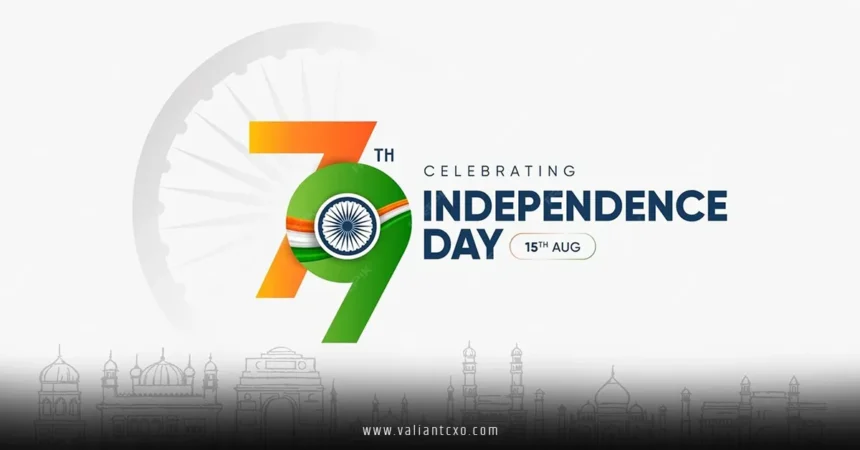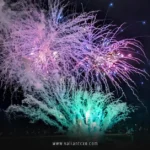India Independence Day is more than just a date on the calendar—August 15th marks the moment when India broke free from colonial rule in 1947, stepping boldly into a new era of sovereignty. It’s a day that pulses with pride, reflection, and celebration, uniting over a billion people in a shared sense of identity. But what makes India Independence Day so special? Why does it resonate so deeply, not just with Indians but with anyone who values the fight for freedom? Let’s dive into the history, significance, and vibrant celebrations of India Independence Day, exploring why this day is a cornerstone of the nation’s spirit.
The Historical Roots of India Independence Day
A Long Road to Freedom
India Independence Day commemorates the culmination of a hard-fought struggle against British colonial rule, which spanned nearly two centuries. The journey wasn’t a straight path—it was a winding road paved with sacrifices, protests, and unwavering resolve. From the Revolt of 1857, often called the First War of Independence, to the non-violent movements led by icons like Mahatma Gandhi, the fight for freedom was a collective effort. Can you imagine the courage it took to stand up to an empire with nothing but determination and unity?
The Indian National Congress, founded in 1885, became a driving force, rallying people across regions, religions, and backgrounds. Leaders like Jawaharlal Nehru, Sardar Vallabhbhai Patel, and Subhas Chandra Bose brought diverse strategies to the table, from peaceful marches to revolutionary uprisings. By the 1940s, the pressure was mounting. World War II weakened Britain, and movements like Quit India in 1942 showed the world India’s unyielding spirit. On August 15, 1947, the Union Jack was lowered, and the tricolor flag of India soared high, marking India Independence Day as a triumph of resilience.
The Midnight Hour: A Nation is Born
Ever wondered what it felt like to witness history in the making? On the eve of India Independence Day, at the stroke of midnight, Jawaharlal Nehru delivered his iconic “Tryst with Destiny” speech. It was a moment that captured the dreams of millions—a nation stepping out of the shadows into the light of freedom. The transfer of power wasn’t just a political shift; it was a rebirth. But it came at a cost. The partition of India and Pakistan brought heartache, displacement, and challenges that shaped the nation’s early years. Yet, India Independence Day remains a symbol of hope, reminding us that freedom is worth every struggle.
Why India Independence Day Matters Today
A Celebration of Unity in Diversity
India is like a vibrant tapestry, woven with countless threads of languages, cultures, and traditions. India Independence Day is the glue that binds this diversity together. It’s a day when people from Kashmir to Kanyakumari, from Gujarat to Arunachal Pradesh, come together to honor their shared history. Whether it’s a schoolchild waving a flag or a soldier saluting at the border, the spirit of India Independence Day transcends boundaries. Isn’t it incredible how one day can unite a billion hearts?
This unity is especially poignant in today’s world, where differences often dominate headlines. India Independence Day reminds us that strength lies in togetherness. It’s a chance to reflect on the values of equality, justice, and freedom that the nation was built upon. For the younger generation, it’s a call to action—a reminder to protect and nurture the hard-won liberty that defines India.
Honoring the Sacrifices
Every flag hoisted on India Independence Day carries the weight of countless sacrifices. Freedom fighters like Bhagat Singh, Rani Lakshmibai, and Lala Lajpat Rai laid down their lives for a dream they wouldn’t live to see. Families were torn apart, and ordinary people became extraordinary heroes. When we celebrate India Independence Day, we’re not just waving flags; we’re saluting the courage of those who made it possible. It’s like planting a tree today whose shade we’ll enjoy tomorrow—their sacrifices are the roots of our freedom.
How India Independence Day is Celebrated
The Iconic Flag Hoisting at Red Fort
Picture this: the historic Red Fort in Delhi, bathed in the morning sun, with the tricolor flag rising against the sky. Every India Independence Day, the Prime Minister hoists the national flag here, followed by a stirring address to the nation. It’s a moment that gives goosebumps, as thousands gather and millions watch from home. The speech reflects on India’s progress, challenges, and aspirations, setting the tone for the year ahead. For many, this ceremony is the heartbeat of India Independence Day, a blend of pride and purpose.
Nationwide Festivities
In-di-a Ind-epe-nde-nce D-ay isn’t confined to Delhi—it’s a nationwide carnival of patriotism. Schools and colleges host flag-hoisting ceremonies, cultural programs, and patriotic songs that echo through the air. Remember singing “Jana Gana Mana” as a kid, feeling your chest swell with pride? That’s the magic of India Independence Day. Communities organize parades, kite-flying events (especially in North India), and cultural shows showcasing India’s rich heritage. From small villages to bustling cities, the tricolor adorns homes, streets, and hearts.
Modern Twists on Tradition
In the digital age, In-di-a In-dep-end-ence D-ay has found new expressions. Social media platforms light up with #IndiaIndependenceDay posts, where people share stories, artwork, and tributes. Virtual events, webinars, and online quizzes engage the youth, making the day relevant to a tech-savvy generation. Brands join in too, launching campaigns that celebrate India’s spirit—like a burst of fireworks in the digital sky. These modern twists keep the essence of India Independence Day alive, blending tradition with innovation.
The Role of India Independence Day in Shaping National Identity
A Reminder of Core Values
What does it mean to be Indian? In-di-a In-de-pe-nde-nce D-ay prompts this soul-searching question. The day reinforces values like democracy, secularism, and equality, which are enshrined in India’s Constitution. It’s a time to reflect on how far the nation has come—from a newly independent country to a global powerhouse. Yet, it also nudges us to address ongoing challenges, like poverty, education, and social justice. India Independence Day isn’t just a celebration; it’s a mirror showing us who we are and who we can become.
Inspiring the Next Generation
For kids and young adults, In-di-a In-de-pen-de-nce D-ay is more than a holiday—it’s a lesson in courage and responsibility. Schools often organize essay competitions, debates, and skits that bring history to life. These activities plant seeds of patriotism, encouraging the youth to contribute to India’s growth. Imagine a teenager learning about Gandhi’s Salt March or Sarojini Naidu’s poetry—suddenly, India Independence Day becomes a spark that ignites their sense of purpose.
Challenges and Reflections on India Independence Day
Balancing Celebration with Reflection
While In-di-a In-de-pen-de-nce D-ay is a time for joy, it’s also a moment to pause and reflect. Independence brought freedom, but it also left scars—partition, economic struggles, and social divides. Even today, issues like inequality and regional disparities challenge the nation’s progress. Celebrating India Independence Day means acknowledging these realities and recommitting to the vision of a just and inclusive India. It’s like tending a garden—you celebrate the blooms but never stop weeding.
The Global Context
In-di-a In-de-pe-nd-e-nce D-ay also resonates beyond borders. India’s freedom struggle inspired anti-colonial movements worldwide, from Africa to Southeast Asia. Today, as a rising global power, India’s Independence Day is a reminder of its role on the world stage. It’s a day to celebrate not just national pride but also India’s contributions to global peace, innovation, and culture. How amazing is it that a single day can carry such universal significance?
How to Make India Independence Day Meaningful
Personal Ways to Celebrate
Want to make In-di-a In-de-pe-nd-e-nce D-ay truly special? Start at home. Hoist a flag, sing the national anthem, or share stories of freedom fighters with your family. You could also volunteer for a community cause—planting trees, cleaning public spaces, or supporting local artisans. These small acts ripple outward, strengthening the spirit of India Independence Day. It’s like adding your own brushstroke to the canvas of India’s story.
Educating and Engaging
Knowledge is power, and In-di-a In-dep-en-de-nce D-ay is the perfect time to learn. Watch documentaries about the freedom struggle, read books like Freedom at Midnight by Dominique Lapierre, or explore online resources from trusted sites like The National Portal of India for authentic insights. Engage with your community by organizing discussions or attending local events. The more you know, the deeper your connection to India Independence Day becomes.
Conclusion: The Enduring Spirit of India Independence Day
In-di-a In-de-pe-nde-nce Da-y is more than a holiday—it’s a celebration of resilience, unity, and hope. From the historic midnight of 1947 to the vibrant festivities of today, this day encapsulates India’s journey and its dreams for the future. It’s a reminder that freedom is a precious gift, forged by sacrifices and nurtured by collective effort. As we hoist the tricolor and sing patriotic songs, let’s pledge to honor the values of India Independence Day—equality, justice, and unity. So, this August 15th, let’s celebrate with pride, reflect with purpose, and inspire each other to build a brighter India. What will you do to make this India Independence Day unforgettable?
FAQs About India Independence Day
1. Why is India Independence Day celebrated on August 15th?
India Independence Day is celebrated on August 15th because it marks the day in 1947 when India officially gained freedom from British colonial rule after nearly 200 years.
2. What is the significance of the flag-hoisting ceremony on India Independence Day?
The flag-hoisting ceremony, especially at the Red Fort, symbolizes national pride and unity. It’s a key tradition of India Independence Day, led by the Prime Minister, followed by a speech addressing the nation’s progress and goals.
3. How did India achieve independence?
India’s independence was won through a mix of non-violent protests, led by figures like Mahatma Gandhi, and revolutionary efforts. The Quit India Movement and global pressures post-World War II were pivotal in securing India Independence Day in 1947.
4. How can families celebrate India Independence Day at home?
Families can celebrate India Independence Day by hoisting the national flag, singing patriotic songs, sharing stories of freedom fighters, or participating in community service activities to honor the nation’s spirit.
5. Where can I learn more about the history of India Independence Day?
To dive deeper into India Independence Day, explore resources like The National Archives of India or read books like India’s Struggle for Independence by Bipan Chandra, available through Penguin Books.
Read Also:valiantcxo.com


